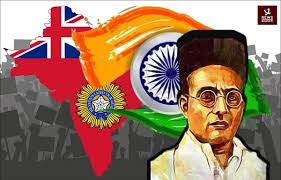
20-Jun-2024 , Updated on 6/20/2024 7:10:43 AM
Hero or traitor? Reassessing Veer Savarkar’s role in Indian history Part 2: The Seeds of Revolution
Influenced by stalwarts like Bal Gangadhar Tilak and his own elder brother, Ganesh Damodar Savarkar, Vinayak’s political consciousness blossomed. He considered Tilak his mentor and began organizing public celebrations of Ganesh Utsav to foster unity and nationalist sentiment among the youth. His marriage to Yamuna Bai marked the beginning of a new chapter, where his fervor for education and writing grew alongside his familial responsibilities.
Despite financial hardships, Yamuna Bai’s unwavering support allowed Savarkar to pursue higher education. His admission to Fergusson College in Pune became a turning point. It was here that Savarkar's political activities intensified, fueled by Tilak’s revolutionary ideas. In 1903, he co-founded the secret society Mitra Mela with his brother Ganesh, which later evolved into the more radical Abhinav Bharat.
The Swadeshi movement of 1905 further galvanized Savarkar's resolve. He and his compatriots, frustrated by the omnipresence of foreign goods, initiated a campaign to boycott British products. Under Savarkar’s leadership, the youth of Abhinav Bharat engaged in fiery rhetoric against the British, their words stoking the embers of rebellion across India. Savarkar's activism soon led to his expulsion from college, but not before he had left an indelible mark on the nationalist movement.
In 1906, Savarkar received a scholarship from Shyamji Krishna Varma, enabling him to study law in London. His time in England proved pivotal. He took refuge in India House, a hub for Indian students and freedom fighters, where he quickly became a trusted aide to Krishna Varma. Here, Savarkar founded the Free India Society, a group dedicated to discussing and strategizing for India's independence.
Savarkar's fiery spirit knew no bounds. He began smuggling revolutionary literature and bomb manuals from London to India, his actions attracting the attention of British authorities. It was in London that he met Madan Lal Dhingra, a kindred spirit, whose assassination of Curzon Wyllie, a senior British official, sent shockwaves through the British establishment. Though Savarkar was not directly involved, the British linked him to the murder, prompting a manhunt.
To read more: https://yourviews.mindstick.com/view/87377/hero-or-traitor-reassessing-veer-savarkar-s-role-in-indian-history-part-1

Student
I am a content writter !
Join Our Newsletter
Subscribe to our newsletter to receive emails about new views posts, releases and updates.
Copyright 2010 - 2025 MindStick Software Pvt. Ltd. All Rights Reserved Privacy Policy | Terms & Conditions | Cookie Policy